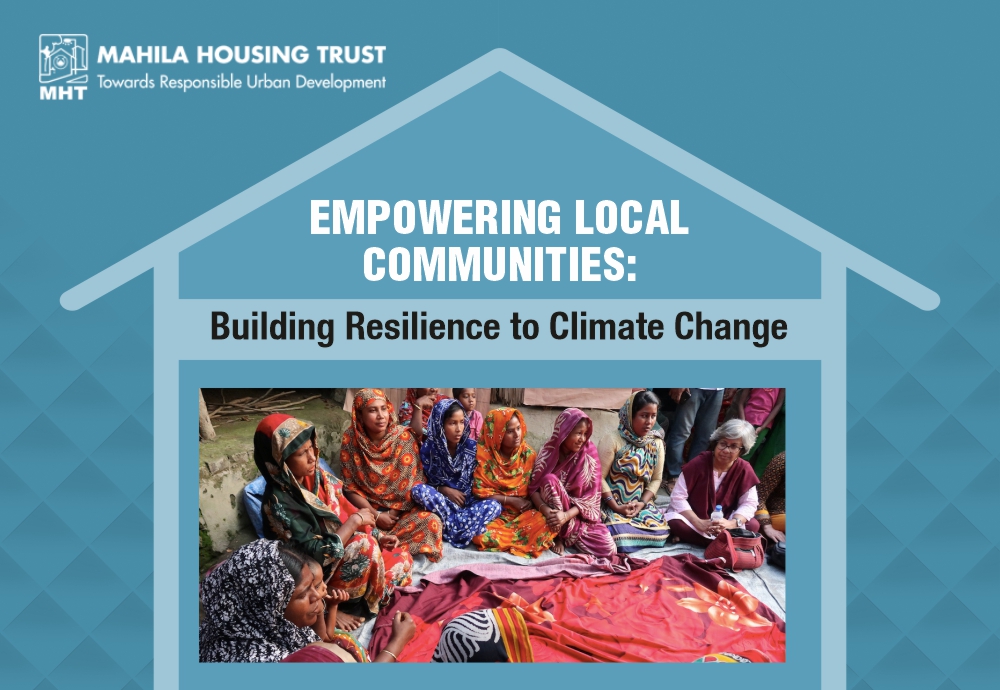
Empowering Local Communities: Building Resilience to Climate Change
A concerted effort is needed at all levels to address the critical global issue of climate change. Local communities play a crucial role in building resilience to climate change. By empowering communities with knowledge, resources, and support, we can help them adapt to the impacts of a changing climate and create sustainable and resilient livelihoods. In this blog post, we will explore the key steps to empower local communities in building climate resilience, focusing on energy-efficient livelihoods, cool roofs, sustainable housing, climate insurance, and combating heat stress.
Understanding Climate Change Resilience:
Climate resilience refers to a community’s ability to withstand and recover from the impacts of climate change. Rising temperatures, extreme weather events, and sea-level rise pose significant threats to communities worldwide. According to the Intergovernmental Panel on Climate Change (IPCC), the world has already warmed by 1 degree Celsius above pre-industrial levels, leading to more frequent and severe climate-related disasters.
Local Communities Contribution to Resilience Building:
Local communities are on the front lines of climate change impacts. They possess valuable knowledge about their local environments, resources, and vulnerabilities. Empowering communities allows them to actively participate in decision-making processes and take ownership of resilience-building initiatives. When communities are engaged, solutions are more likely to be effective, culturally appropriate, and sustainable.
Steps to Empower Local Communities for Climate Resilience:
Awareness and Education:
Raising awareness about climate change and its impacts is the first step towards building resilience. By providing accurate and accessible information, communities can better understand the risks they face and the available adaptation options. Local workshops, educational programs, and community-led discussions can help disseminate this knowledge effectively.
Capacity Building:
Building the capacity of community members is essential for successful resilience-building. Training programs can equip individuals with skills in sustainable agriculture, renewable energy, and natural resource management. These skills empower communities to implement energy-efficient livelihood practices, reducing their carbon footprint and enhancing their adaptive capacity.
Collaborative Decision-Making:
Collaborative decision-making involves engaging community members, local authorities, and relevant stakeholders in resilience planning. By fostering inclusive and participatory processes, communities can ensure that diverse perspectives and local knowledge are integrated into climate resilience initiatives. This approach strengthens community cohesion and ownership of projects.
Access to Resources and Funding:
Limited access to resources and funding often hinders community resilience efforts. Governments, NGOs, and international organizations need to support local communities by providing financial resources, technical expertise, and sustainable infrastructure. Climate insurance schemes can also protect vulnerable communities against climate-related disasters, facilitating their recovery and future resilience.
Implementing Locally Relevant Solutions:
Each community has unique challenges and opportunities in the face of climate change. Implementing locally relevant solutions is crucial for building resilience. Energy-efficient livelihoods, such as promoting sustainable agriculture practices or developing small-scale renewable energy projects, can not only reduce emissions but also enhance community resilience and economic well-being. Cool roofs and sustainable housing initiatives help mitigate the urban heat island effect, improving indoor comfort and reducing energy consumption.
Case Studies and Success Stories:
Numerous communities worldwide have successfully built resilience to climate change. For instance, the city of Miami implemented a climate insurance program to protect vulnerable homeowners from rising sea levels and extreme weather events. In India, the Cool Roof Project has demonstrated the effectiveness of reflective roofs in reducing heat stress and lowering energy consumption. These success stories inspire and provide valuable lessons for others embarking on resilience-building journeys.
Facts and Figures (with sources):
According to the World Bank, by 2050, an estimated 143 million people could be displaced within their countries due to climate change impacts, such as rising sea levels and extreme weather events.
The International Energy Agency (IEA) states that buildings are responsible for nearly 30% of global energy consumption and greenhouse gas emissions.
The Global Commission on Adaptation estimates that investing $1.8 trillion globally in adaptation measures by 2030 could generate $7.1 trillion in total net benefits.
Conclusion:
Empowering local communities to build resilience to climate change is crucial for a sustainable future. By raising awareness, providing resources, and implementing locally relevant solutions, communities can adapt and thrive amidst climate challenges. It is vital for governments, organizations, and individuals to support community-led initiatives and foster collaboration to create a resilient and sustainable world. Organizations like Mahila Housing Trust play a significant role in this endeavor. They actively work towards empowering communities to promoting sustainable housing solutions, and enhancing climate resilience. To delve deeper into Mahila Housing Trust’s initiatives and gain valuable insights, Get in touch with us directly. Together, we can forge a resilient and sustainable future in the face of climate change.
